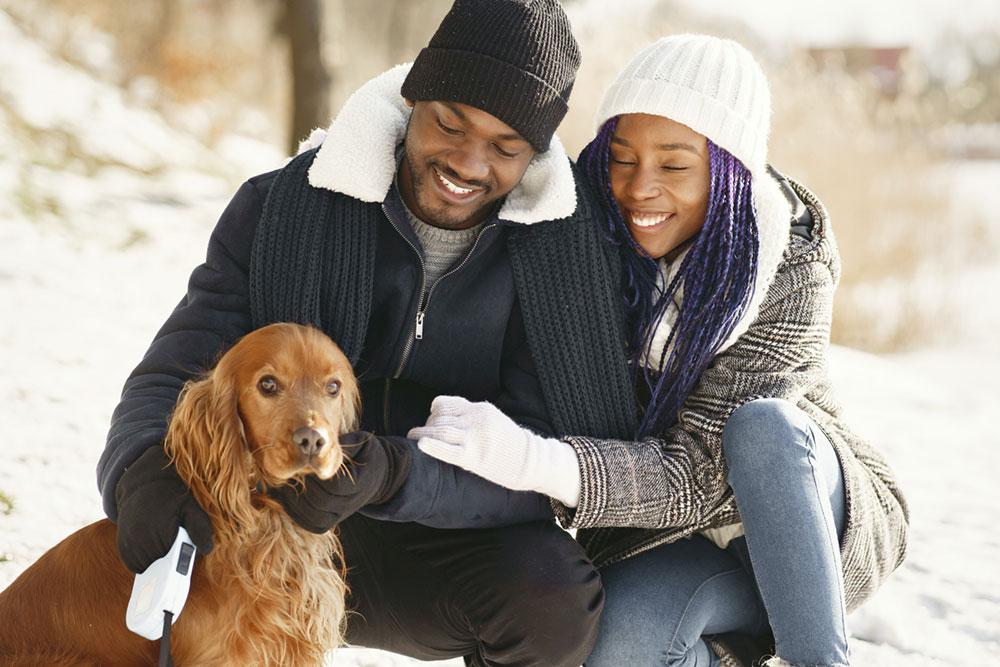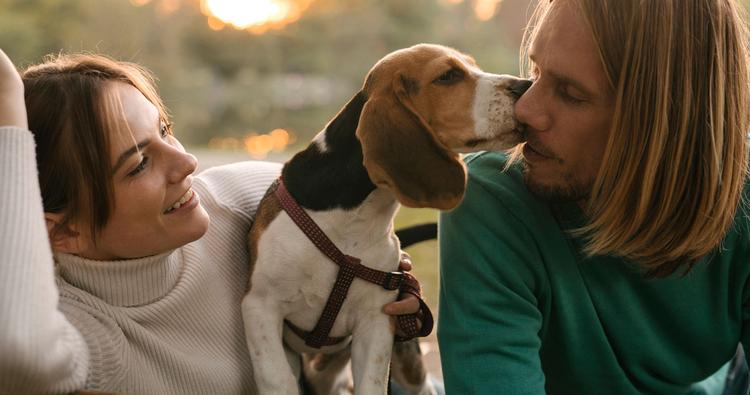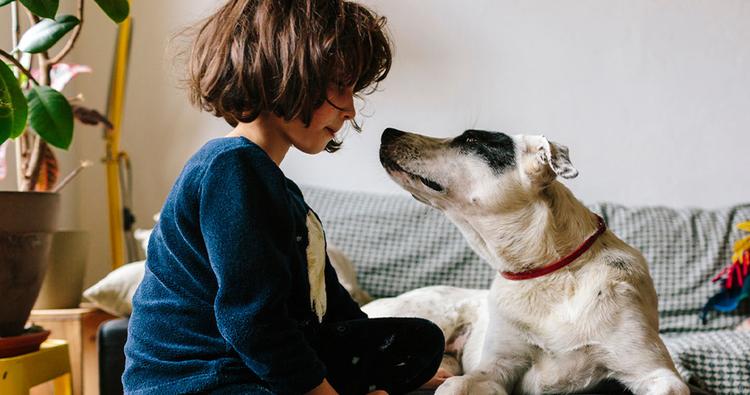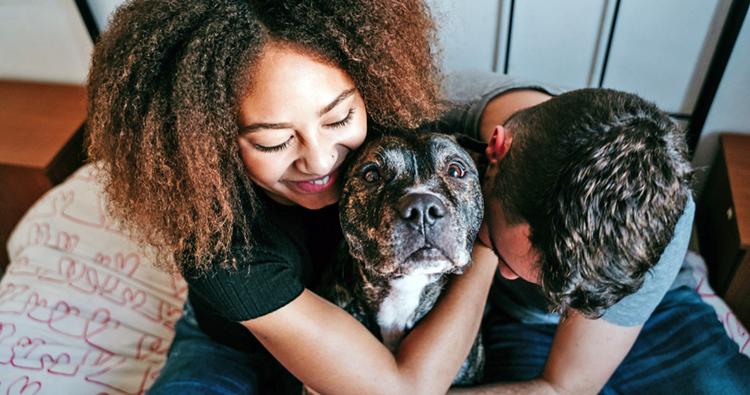The Cocker Spaniel Adoption Guide: What to Know Before Adopting This Breed
From grooming to exercise, here’s everything you need to know before adopting one of the happiest, most affectionate dogs.
From grooming to exercise, here’s everything you need to know before adopting one of the happiest, most affectionate dogs.
by Mollie Jackman, | March 10, 2025

Studio KME / Stocksy
Cocker Spaniels are known for their cheerful disposition, affectionate nature, and that beautiful curly coat. While they make wonderful companions for many individuals and families, it’s important to understand how they might fit into your home before adopting one. Read on to learn more.
Cocker Spaniels can be a great fit for those who appreciate a loving, playful dog — but they also require regular grooming and thrive with proper training and activity. Before bringing one home, it’s essential to understand both the rewards and responsibilities of living with a Cocker Spaniel. Adopt a Pet spoke with Joann Reagan, executive director of NorCal Cocker Rescue, to help create this Cocker Spaniel care guide.
TL;DR: Cocker Spaniels are affectionate, playful, and intelligent pups — often great family pets. But their grooming needs, potential for separation anxiety, and susceptibility to certain health issues mean there are some considerations to make before bringing one home. |

Danil Nevsky / Stocksy
Spaniels have been around in the US for more than 400 years, even famously appearing on the Mayflower. Many associate them with images of a perky, chipper dog who’s loyal and family-friendly, perhaps thanks to Disney’s Lady and the Tramp. Some of our favorite celebs have had Cocker Spaniel companions, too, from Oprah to George Clooney to Queen Elizabeth II. Their cheery demeanor also makes them great office pets.
Our affinity for Cocker Spaniels goes beyond their cute looks and lively temperaments, though. In fact, a Cocker Spaniel was the first dog to successfully sniff out cancer in humans at a success rate of more than 50 percent. Let’s check out some of the other reasons why we’re drawn to these delightful dogs, and what to note if you’re thinking about adopting a Cocker Spaniel.
Just like their cartoon counterparts, Cocker Spaniels tend to be happy, merry, and playful. Here are a few more of their characteristics.
They’re good with kids: Cockers are generally affectionate and gentle with children, often making great playmates for your kiddos to grow up with. However, it’s important for kids to learn how to interact with dogs. NorCal Cocker Rescue does not adopt out dogs to families with children under eight, Reagan tells us, because “small, unsupervised children tend to pull their ears, etc., which could result in a bite.”
They’re genuinely happy: Cocker Spaniels are known for being eager-to-please, getting a lot of satisfaction out of making you happy. Since they’re so motivated by praise and affection, they tend to be fairly easy to train. Where some dogs may need special high-value treats to learn new skills, a Cocker Spaniel may be satisfied with a simple “good boy” or a pat on the head for a job well done.
They like other pets: All dogs should ideally be properly socialized from a young age if they’re going to live with other pets, but some breeds have a natural affinity for getting along well with others. Cocker Spaniels are generally good with other pets in the home, and thanks to their medium size, they can make good playmates for both small dogs and larger pups.
Cocker Spaniels are the smallest of the sporting breeds — a group known for athleticism, intelligence, and energy. Let’s break down what that means for their exercise needs.
Moderate exercise: Originally bred as hunting dogs, Cocker Spaniels are no strangers to work. “Younger Cockers can be very active,” Reagan says. “Many love to fetch and play with toys. Exercise is important to keep them socialized and tire them out.” That being said, they’ll likely be happy with daily walks and playtime, especially with interactive toys.
Outdoor activities: Spaniels typically enjoy exploring and retrieving, making them great companions for outdoor activities like camping and hiking.
Mental stimulation: Since Cocker Spaniels are sporting dogs, they enjoy a mental challenge and do best when provided with mental stimulation like puzzles, training, or classes.

Eleganza / iStock
Some of the traits that make Cocker Spaniels great hunters and working dogs also make them more predisposed to certain health conditions. Here are some common health issues that may affect a Cocker Spaniel.
Bone and/or joint issues: Hip dysplasia is a common joint issue among many dog breeds, including Cocker Spaniels. If you notice your pup limping or that they’re not interested in their regular physical activities, you may want to have them checked for this condition.
Luxating patella: This occurs when a dog’s kneecaps become dislocated during activity. When the condition is mild, it may correct itself. But if your pup is limping or holding their leg in an odd position for extended periods, they may need physical therapy or surgery to correct the issue.
Eye problems: These pups often have deep-set, dark eyes surrounded by many skin folds, which makes them extra cute, but also prone to some eye issues. You may have seen older Cocker Spaniels with cataracts, which are fairly common in the breed. They may also be predisposed to glaucoma and/or dry eye, both of which can be treated by your veterinarian.
Ear issues: Part of the Cocker’s charm is in those long, soft ears — helping them uncover birds on a hunt, and making them an alert family guardian. However, those long ears can host bacteria, yeast, and ear mites that you’ll need to keep an eye out for. Reagan says, “It is imperative you clean their ears every week. Otherwise, they may start developing ear infections, which may lead to expensive ear surgery.”
Skin sensitivities: “Cockers tend to have more skin issues,” Reagan says, “so they may need to be bathed in a medicated bath.”
While Cocker Spaniels (like most purebred dog breeds) have their share of medical predispositions, regular veterinary check-ups can help keep medical issues under control. Many of these issues are treatable or even preventable with proper care, and you should always have a veterinarian you trust on hand, upon bringing home a new pet.
Cocker Spaniels tend to be bright and eager-to-please, which is a great combo when it comes to training. Their loyal nature means they’ll likely be great guardians for your family, as long as they’re socialized early and properly.
Their eagerness to please pet parents means Cocker Spaniels respond very well to positive reinforcement. Praise and encouragement may be more valuable to them than other breeds, which is great because you can save the treats for high-value moments. Positive reinforcement training is recommended for Cocker Spaniels to help boost their confidence and ensure you maintain a healthy relationship with them.
Socialization is important for any puppy. But for those who are particularly loyal and prone to separation anxiety, it’s even more vital. Exposing your puppy to positive experiences with other pets, people, and locations early on will help build their confidence and acceptance, creating a well-balanced adult dog.

Cindy Prins / Stocksy
These affectionate, intelligent, and playful companions have specific needs that prospective pet parents should consider before adopting a Cocker Spaniel.
Those beautiful, silky coats attract all kinds of compliments, but they do require regular maintenance. Here are some Cocker Spaniel grooming tips.
They need to be brushed a few times per week, so their coat doesn’t become tangled or matted.
It’s also ideal to take your Cocker Spaniel to a professional groomer at least once every two months to help keep their coat healthy.
And don’t forget to clean those ears.
Since their breed thrives on companionship, the happy-go-lucky Cocker Spaniel can be prone to separation anxiety. Early crate training with positive associations can help them feel more comfortable when left alone. Reagan suggests working on leaving your pup alone for a few minutes, and extending that time as they become more comfortable with it. It can also help to give them an interactive toy to keep them busy.
Although those big ears and their alert, loyal nature make Cocker Spaniels great watch dogs, these characteristics can also make them prone to barking. Unexpected noises and unfamiliar visitors can cause alarm, but early training and socialization can help mitigate any issues.
As we’ve mentioned, Cocker Spaniels are extremely social dogs. They tend to be happy, but their drive for companionship means they can pick up on the emotions around them. They tend to thrive in calm, supportive homes that use gentle and positive training methods.

There may be no such thing as a perfect pet or a perfect pet parent — but there are some families and lifestyles more conducive to the Cocker Spaniel breed. Here are a few.
People committed to grooming: Those long, silky coats require a bit of a commitment. Cocker Spaniel parents should be prepared for regular brushing and some professional grooming.
Consistent trainers: Cocker Spaniels are eager to please, but their sensitive nature demands a consistent, calm environment. If you can commit to positive enforcement and socialization, you’ll help your dog build confidence around different people, places, and situations.
Active pet parents: Although not as high-energy as some working breeds, Cocker Spaniels need daily walks and mental stimulation to remain happy and healthy.
Families who are home frequently: Remote workers, stay-at-home-parents, or retired people are all examples of good families for a Cocker Spaniel. Although they can be trained to handle more alone time, families who can be with a Cocker Spaniel often are likely the best fit.
Cocker Spaniels can be great with children. Although this doesn’t apply to every single Cocker Spaniel, the breed’s temperament is generally affectionate, playful, and gentle, making them a great pet for families. Keep in mind that no dog should be left unattended with young children, and it’s important for your kids to learn how to properly interact with pups.
Cocker Spaniels’ long, silky coats require brushing a few times per week and professional grooming every six to eight weeks. Their long ears should also be cleaned regularly to prevent ear infections.
While they’re not known to bark as much as breeds such as Beagles or Hounds, Cocker Spaniels can be vocal. They often alert you to unfamiliar sounds, or bark when anxious. Early training and socialization can help mitigate this.
Thanks to their friendly demeanors and moderate exercise needs, Cocker Spaniels can be great dogs for first-time pet parents — if they’re prepared. “They are a breed who requires a lot of attention to their ears and grooming,” Reagan says, noting that they may also need higher-quality food due to issues with allergies. Although they may not be the perfect first pet for everyone, if you have time for walks and grooming, and are committed to training, a Cocker Spaniel may be a great fit for you. Thanks to their size, they can also make great apartment dogs, as long as they get adequate exercise.
It is better to adopt a Cocker Spaniel, because there are many in rescues or shelters (where many already come vaccinated, spayed/neutered, and microchipped) for their forever homes. Adoption is often more affordable than buying from a breeder. (With so many scams, it’s also very important to find a breeder who’s responsible, prioritizing health over physical traits.) You can view adoptable Cocker Spaniels right here on Adopt a Pet.
“Cocker Spaniel.” Central Texas Veterinary Specialty & Emergency Hospital, 2016, ctvsh.com/services/dogs/breeds/cocker-spaniel.html.
“Cocker Spaniel | Type of Dog | Britannica.” www.britannica.com, www.britannica.com/animal/cocker-spaniel.
Podberscek, Anthony L., and James A. Serpell. “The English Cocker Spaniel: Preliminary Findings on Aggressive Behaviour.” Applied Animal Behaviour Science, vol. 47, no. 1-2, Apr. 1996, pp. 75–89, https://doi.org/10.1016/0168-1591(95)01012-2.
Simpson, Robert John, et al. “Rethinking Dog Breed Identification in Veterinary Practice.” Journal of the American Veterinary Medical Association, vol. 241, no. 9, Nov. 2012, pp. 1163–1166, https://doi.org/10.2460/javma.241.9.1163.
“USATODAY.com - Study Shows Dogs Able to Smell Cancer.” Usatoday.com, 2025, usatoday30.usatoday.com/news/health/2004-09-24-cancer-sniffing_x.htm.

Mollie Jackman is a writer, editor, and graduate of Lindenwood University’s MFA in writing. She’s also a pet parent to a goofy big-eared dog and two brown tabby cats, plus a rotating cast of foster animals. When she’s not reading, writing, or picking up strays, she can be found binge-watching arguably terrible reality TV shows and cooking competitions or rolling around the local skating rink in Columbia, Missouri.

Breed Info

Breed Info

Breed Info

Breed Info
These cute mixes showcase a lovable blend of breeds, offering endless charm and personality.

Breed Info
Boost morale and reduce stress with a dog in the office. These breeds are up for the job.

Breed Info
Want a dog who sticks to you like glue? We’ve got just the breeds for you. Below, our shortlist of some of the most adoring canine breeds.

Behavior & Training

Adoption Advice
Learn how to spot food allergies in your newly adopted dog and manage their diet with confidence.

Breed Info
Because you’re never too old to find your bestie.